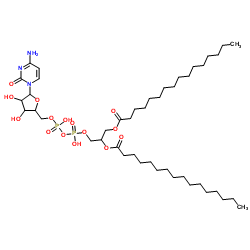Inhibition of lactoperoxidase-catalyzed 2,2'-azino-bis(3-ethylbenzthiazoline-6-sulfonic acid) (ABTS) and tyrosine oxidation by tyrosine-containing random amino acid copolymers.
Morten R Clausen, Leif H Skibsted, Jan Stagsted
Index: J. Agric. Food Chem. 56 , 8692-8698, (2008)
Full Text: HTML
Abstract
Oxidation of 2,2'-azino-bis(3-ethylbenzthiazoline-6-sulfonic acid) by lactoperoxidase was found to be inhibited by tyrosine-containing random amino acid copolymers but not by tyrosine. Both electrostatic effects and polymer size were found to be important by comparison of negatively and positively charged copolymers of varying lengths, with poly(Glu, Tyr)4:1 ([E 4Y 1] approximately 40) as the strongest competitive inhibitor (EC 50 approximately 20 nM). This polymer did not form dityrosine in the presence of lactoperoxidase (LPO) and peroxide. Furthermore, incubation with tert-butyl hydroperoxide, as opposed to hydrogen peroxide, resulted in a peculiar long lag phase of the reaction between the redox intermediate compound II and [E 4Y 1] approximately 40, indicating a very tight association between enzyme and inhibitor. We propose that interactions between multiple positively charged areas on the surface of LPO and the polymer are required for optimal inhibition.
Related Compounds
| Structure | Name/CAS No. | Molecular Formula | Articles |
|---|---|---|---|
 |
poly(glu, tyr) sodium salt
CAS:97105-00-5 |
C44H81N3O15P2 |
|
Decreased insulin receptor tyrosine kinase activity and plas...
2000-04-01 [Diabetes 49 , 603-610, (2000)] |
|
Electrochemical detection of tyrosine derivatives and protei...
2010-09-15 [Biosens. Bioelectron. 26 , 235-240, (2010)] |
|
An electrochemical biosensor for the detection of tyrosine o...
2011-01-15 [Biosens. Bioelectron. 26 , 2292-2296, (2011)] |
|
Chemical rescue of a mutant protein-tyrosine kinase.
2000-12-08 [J. Biol. Chem. 275 , 38127-38130, (2000)] |
|
A carboxyl-terminal mutation of the epidermal growth factor ...
2003-07-18 [J. Biol. Chem. 278 , 26810-26816, (2003)] |